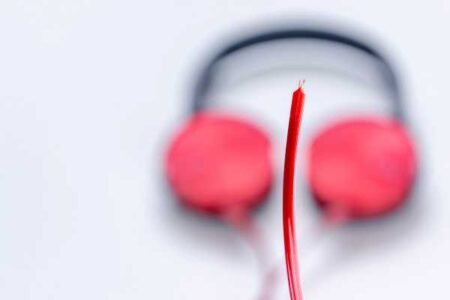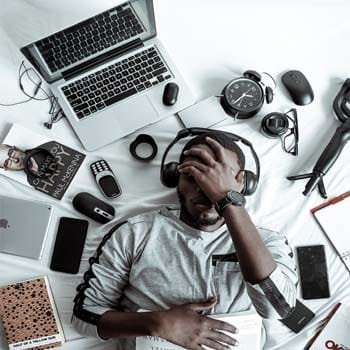Headphones are great devices that let us enjoy music, podcasts, games, and more without disturbing others. But sometimes, headphones can break due to various reasons, such as wear and tear, accidental damage, or faulty wiring. If you have a pair of broken headphones, don’t throw them away just yet. You might be able to fix them yourself with some simple tools and techniques. In this article, I will show you how to repair headphones with my step-by-step guide.
How to repair headphones wires and cables
One of the most common problems with headphones is that the wires or cables get frayed, cut, or disconnected. This can cause audio issues such as no sound, static, or sound only on one side. To fix this problem, you will need the following tools:
- A wire stripper or a sharp knife
- A soldering iron and some solder
- Some heat-shrink tubing or electrical tape
- A lighter or a heat gun
Here are the steps to repair headphone wires and cables:
Strip the cable
First, you need to expose the wires inside the cable. Use a wire stripper or a sharp knife to carefully cut off the outer layer of the cable. Be careful not to damage the wires inside. You should see four wires: red, green, blue, and copper. The red and green wires are for the right and left audio channels, respectively. The blue wire is for the microphone (if your headphones have one). The copper wire is for the ground.
Remove the wire coating
Next, you need to remove the thin coating that covers each wire. This coating prevents the wires from shorting out, but it also prevents them from conducting electricity. Use a lighter or a heat gun to gently heat each wire until the coating melts off. Alternatively, you can use a soldering iron to burn off the coating.
Rejoin the wires
Now, you need to reconnect the wires that are broken or disconnected. To do this, you need to solder them together. Soldering is a process of joining two metal parts by melting a filler metal (solder) between them. To solder the wires, follow these steps:
- Twist together the ends of the same color wires. For example, twist together the red wires from both sides of the break.
- Heat up your soldering iron and touch it to the twisted wires.
- Apply some solder to the tip of your soldering iron and let it flow onto the twisted wires.
- Remove your soldering iron and let the solder cool down and harden.
- Repeat this process for all four wires.
Use heat-shrink tubing or electrical tape
Finally, you need to cover up the exposed wires and solder joints. To do this, you can use heat-shrink tubing or electrical tape. Heat-shrink tubing is a plastic tube that shrinks when heated, creating a tight seal around the wires. Electrical tape is a sticky tape that insulates and protects the wires. To use heat-shrink tubing, follow these steps:
- Cut a piece of heat-shrink tubing that is long enough to cover the entire break.
- Slide it over one end of the cable before you solder the wires.
- After you solder the wires, slide it over the break and center it.
- Use a lighter or a heat gun to heat up the tubing until it shrinks and fits snugly around the wires.
- Repeat this process for each break in your cable. To use electrical tape, follow these steps:
- Cut a piece of electrical tape that is long enough to wrap around the break several times.
- After you solder the wires, wrap the tape around them tightly and evenly.
- Repeat this process for each break in your cable.

How to repair headphone drivers
Another common problem with headphones is that the drivers get damaged or blown out. Drivers are the parts of headphones that produce sound by vibrating a diaphragm in response to an electric signal. Drivers can get damaged by playing music too loud, dropping them, or exposing them to water or dust. If your drivers are damaged, you might hear rattling noises, distorted sounds, or no sound at all. To fix this problem, you will need the following tools:
- A screwdriver
- A pair of tweezers
- Some glue
- Some cotton swabs
- Some rubbing alcohol
Here are the steps to repair headphone drivers:
Open up your headphones
First, you need to access the drivers inside your headphones. To do this, you need to open up your headphones by removing any screws or clips that hold them together. Be careful not to lose any parts or damage any wires.
Inspect your drivers
Next, you need to inspect your drivers for any signs of damage. Look for any cracks, tears, holes, or loose parts on the diaphragm or the coil (the metal ring around it). Also, check if there is any dust, dirt, or debris on the drivers. If you see any damage or dirt, proceed to the next step. If you don’t see any, your drivers might be fine and the problem might be elsewhere.
Clean your drivers
Now, you need to clean your drivers to remove any dust, dirt, or debris that might interfere with the sound quality. To do this, follow these steps:
- Use a pair of tweezers to gently remove any large pieces of debris from the drivers.
- Use a cotton swab dipped in rubbing alcohol to gently wipe the diaphragm and the coil. Be careful not to damage or wet them too much.
- Use a dry cotton swab to gently dry the drivers.
- Repeat this process for both drivers.
Repair your drivers
Finally, you need to repair any damage on your drivers. To do this, follow these steps:
- If there are any cracks, tears, or holes on the diaphragm, use some glue to seal them. Apply a thin layer of glue over the damage and let it dry completely. Be careful not to use too much glue or cover the entire diaphragm.
- If there are any loose parts on the coil, use some glue to reattach them. Apply a small amount of glue on the loose part and press it back into place. Hold it for a few seconds until it sticks. Be careful not to use too much glue or touch the coil with your fingers.
- Repeat this process for both drivers.
How to repair headphone jacks
The last common problem with headphones is that the jacks get bent, broken, or loose. The jack is the part of headphones that plugs into your audio source, such as your phone, laptop, or stereo. The jack can get damaged by pulling, twisting, or bending it too much. If your jack is damaged, you might experience poor connection, intermittent sound, or no sound at all. To fix this problem, you will need the following tools:
- A wire cutter
- A wire stripper or a sharp knife
- A soldering iron and some solder
- A new jack that matches your old one
- Some heat-shrink tubing or electrical tape
- A lighter or a heat gun
Here are the steps to repair headphone jacks:
Cut off your old jack
First, you need to remove your old jack from your cable. To do this, use a wire cutter to cut off the jack as close to its base as possible. Discard the old jack.
Strip the cable
Next, you need to expose the wires inside the cable. Use a wire stripper or a sharp knife to carefully cut off about an inch of the outer layer of the cable. Be careful not to damage the wires inside. You should see four wires: red, green, blue, and copper. The red and green wires are for the right and left audio channels, respectively. The blue wire is for the microphone (if your headphones have one). The copper wire is for the ground.
Remove the wire coating
Next, you need to remove the thin coating that covers each wire. This coating prevents the wires from shorting out, but it also prevents them from conducting electricity. Use a lighter or a heat gun to gently heat each wire until the coating melts off. Alternatively, you can use a soldering iron to burn off the coating.
Solder the wires to the new jack
Now, you need to connect the wires to the new jack. To do this, you need to solder them together. Soldering is a process of joining two metal parts by melting a filler metal (solder) between them. To solder the wires to the new jack, follow these steps:
- Identify which terminal on the new jack corresponds to which wire color. Usually, there are three terminals: tip (red), ring (green), and sleeve (copper). If your headphones have a microphone, there might be an extra terminal for it (blue).
- Heat your soldering iron and touch it to one of the terminals on the new jack.
- Apply some solder to the tip of your soldering iron and let it flow onto the terminal.
- Remove your soldering iron and let the solder cool down and harden.
- Repeat this process for all four wires and terminals.
Use heat-shrink tubing or electrical tape
Finally, you need to cover up the exposed wires and solder joints. To do this, you can use heat-shrink tubing or electrical tape. Heat-shrink tubing is a plastic tube that shrinks when heated, creating a tight seal around the wires. Electrical tape is a sticky tape that insulates and protects the wires. To use heat-shrink tubing, follow these steps:
- Cut a piece of heat-shrink tubing that is long enough to cover all four wires and terminals.
- Slide it over one end of the cable before you solder the
Conclusion of How to Repair Headphones
In conclusion, repairing headphones is not as difficult as it may seem. With some basic tools and materials, you can fix common problems such as broken wires, loose connections, or faulty plugs. By following the step-by-step guide in this article, you can save money and time, and extend the life of your headphones. You can also enjoy your favorite music, podcasts, or audiobooks without any interruption or distortion. Remember to test your headphones after repairing them to make sure they work properly. If you have any questions or feedback, please let us know in the comments section below. I hope that I answered your question about “how to repair headphones” Thank you for reading!
Read also: Onn Wireless Earbuds Not Charging




